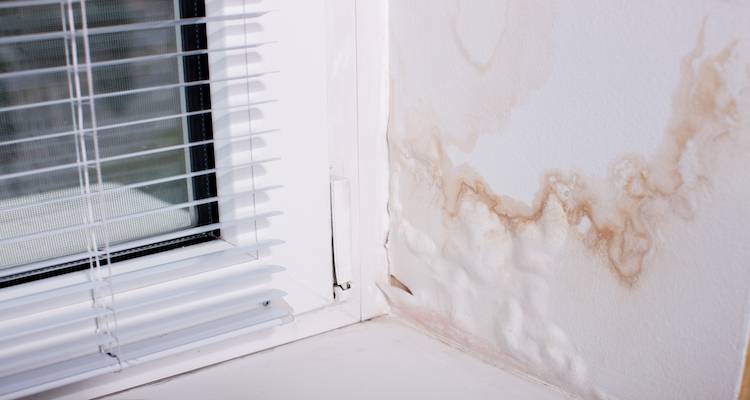How to Clean a Washing Machine
Want to know the steps required to clean a washing machine?
In this article, we'll not only break down the approach required but also look at the tools, safety equipment, and materials. We'll also briefly discuss ways to prepare prior to cleaning a washing machine.
Without further ado, let's discuss what cleaning a washing machine entails.
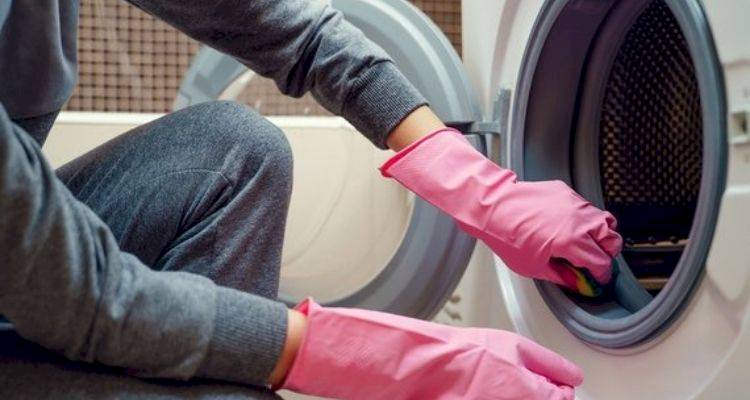
Table of Contents
- What Does Cleaning a Washing Machine Involve?
- What Tools Do I Need to Clean a Washing Machine?
- What Safety Equipment Do I Need to Clean a Washing Machine?
- What Materials Do I Need to Clean a Washing Machine?
- Preparing to Clean Your Washing Machine
- How to Clean a Washing Machine Yourself
- Types of Washing Machine Cleaning Methods
- FAQs
What Does Cleaning a Washing Machine Involve?
This process involves performing steps such as running a service wash and cleaning the filter. Cleaning a washing machine will deal with bacteria, mould, and rid it of bad smells, while also providing additional benefits.
If your washing machine is used regularly, it's recommended to run the service wash once a month. Then carry out an additional deep clean of the drawer, seal and the machine's filter every 1 to 3 months.
What Tools Do I Need to Clean a Washing Machine?
There are a range of tools required to clean a washing machine properly, and the tools described in this section will apply to different types of cleaning.
Here are the tools you'll need, depending on the job:
- Damp cloth
- Shallow tray or towel
Other tools may prove necessary per the manufacturer's guidance (if applicable) for certain methods of cleaning a washing machine. However, more than likely, one or both of the above tools will be all you need.
What Safety Equipment Do I Need to Clean a Washing Machine?
You may or may not require safety equipment for this work. It goes without saying that it's important to avoid accidental ingestion of any substances from the washing machine.
You may want to consider the following equipment:
- Protective gloves
- Safety glasses
Even if you choose against wearing safety gloves, it's important to wash your hands with soap after dealing with the different surfaces and substances required to clean a washing machine. This will protect you against germs or ingesting a toxic substance.
What Materials Do I Need to Clean a Washing Machine?
There are also some materials you'd need to clean a washing machine. Let's take a look at this.
Here are the materials you might need:
- Drain unblocker
- Cleaning tablets
- Baking soda paste
- White vinegar
- Washing detergent
Again, as with tools, this list could be expanded if specific materials are needed in accordance with the instructions of the manufacturer.
Preparing to Clean Your Washing Machine
There are a few measures worth taking before you actually get to cleaning the washing machine. Let's have a look at these steps in a short amount of detail.
Removing Clothes
Obviously, any clothes in the washing machine should be removed. Spin the drum to check for any extra clothing items like socks that may be stuck at the top, for instance.
Inspecting the Washing Machine
It's also worth briefly inspecting the washing machine to check for any issues that stand out, such as a broken part of the drum. After all, you don't want to clean a washing machine only to find you need to have it replaced.
Inspecting the washing machine will also help you narrow down the potential source of the bad smell (if applicable). It's also possible that there are no particular issues with bad odours coming from the washing machine, but you should still give it a good clean regardless.
How to Clean a Washing Machine Yourself
In this section, we will describe the different steps/jobs involved in cleaning a washing machine. You may prefer to undertake one, a few, or all of these tasks. As mentioned earlier, how often you should perform these jobs will vary.
Step 1 - Service Wash
This first step is to prevent odours accumulating in the drum and should be performed once a month. A service wash is a particularly hot wash that must be undertaken without any clothes inside.
Your washing machine manual should provide details on how to run a service washing, including the correct temperature, as this can vary between manufacturers and models. This will then help get rid of mould or bacteria correctly.
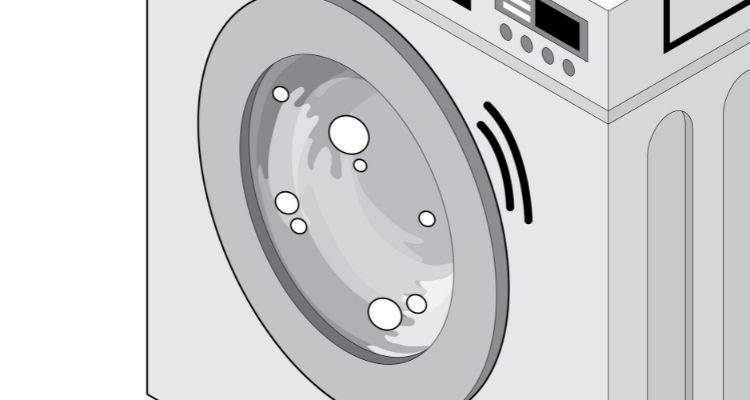
Step 2 - Clean the Door Seal
Next, you'll want to check for mould that has grown in the door's rubber seal. Wipe it briefly using a damp cloth. The issue with mould accumulation is that it can result in seal damage over time. In this case, you should consider hiring a professional for a seal replacement.
To achieve a clean seal, apply a layer of paste made by mixing baking soda and water, or use a mild detergent. If you need to disinfect the seal, then dilute a small amount of bleach with water and wipe around the seal with a cloth. Wipe the seal clean with a separate cloth.
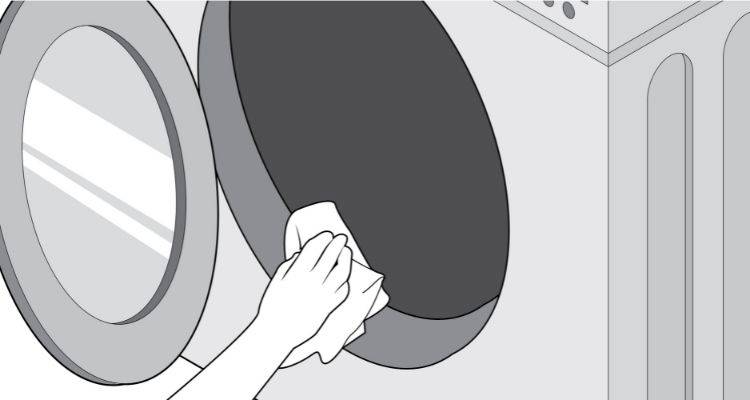
Step 3 - Washing the Detergent Drawer
Another important part of the cleaning process is to remove the drawer and wipe it clean after performing a service wash. It would help if you also cleaned the surrounding area of the drawer, as this can also give off an unpleasant smell.
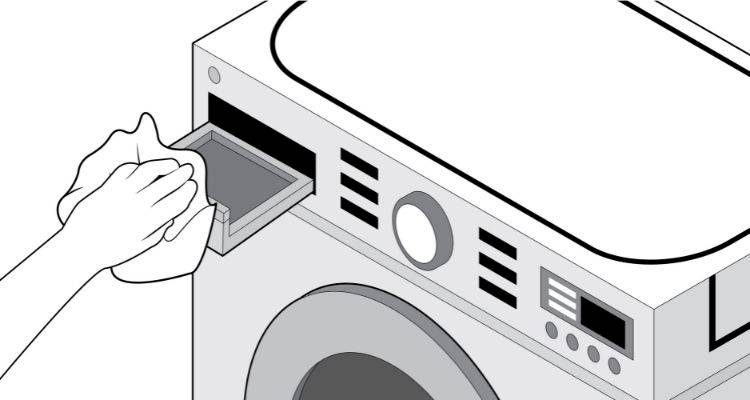
Step 4 - Filter Cleaning
You may also find that the filter itself is giving off a bad smell. You'll generally find the filter at the front of your washing machine, usually towards the bottom right.
Remove the cover before draining any excess water using the hose, and place a towel or shallow tray underneath to catch the water. Next, unscrew the filter and clean it with warm water, as there is often a build-up of gunk that may be causing the unwanted smell.
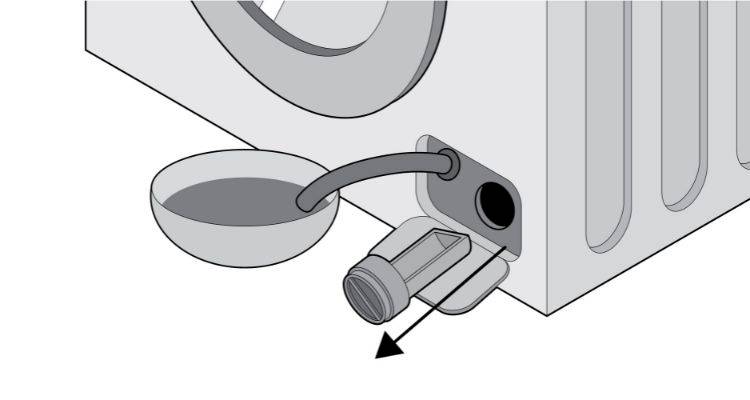
Step 5 - Leaving the Door and Drawer Open
You should also try leaving the machine door open following a wash. This gives a chance for sufficient air circulation. This can, in turn, prevent mould and bacteria from growing. You should also consider leaving the machine's detergent drawer partly open for this same purpose.
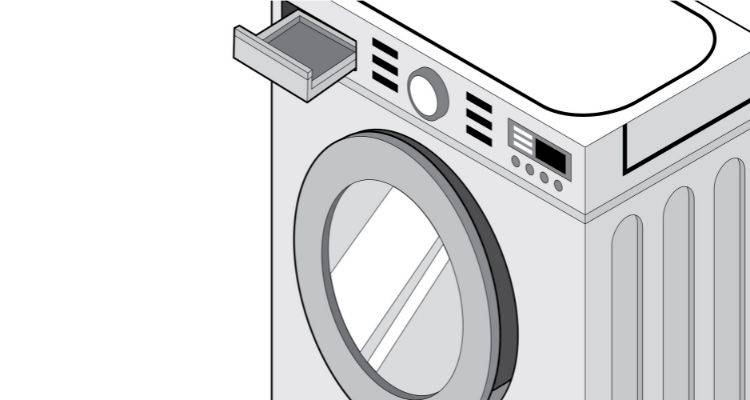
Step 6 - Take a Look at the Waste Pipe
If the smell still remains, it may be coming from the waste pipe - this is where the washing machine drains its water. If you think there might be a blockage, try using a drain unblocker.
If the problem continues, it’s best to call a local plumber for a professional opinion. Hopefully, once everything has been resolved, your washing machine should then be clean and odor-free.
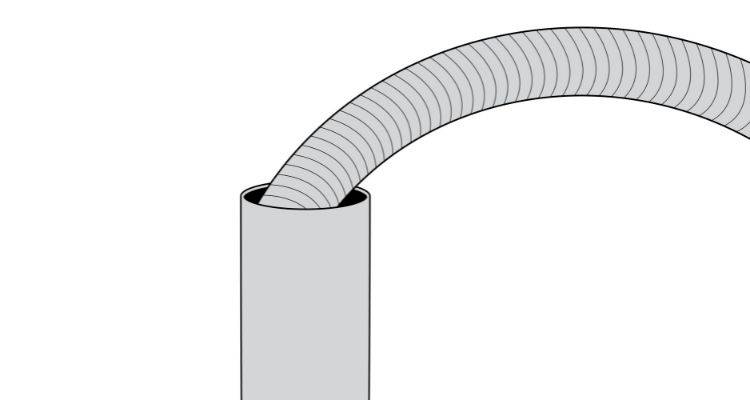
Types of Washing Machine Cleaning Methods
We'll now take a closer look at the methods used to clean a washing machine. We'll discuss their pros & cons, as well as their costs.
Deep Clean
Add a few cups of white vinegar to the detergent tray or directly into the drum and run a hot cycle. You can repeat this with baking soda to remove musty smells, or use cleaning tablets that are specifically for use in washing machines.
Cleaning mould can be achieved by using a mix of a quarter of a cup of lemon juice, half a cup of hydrogen peroxide, with two cups of water and wiping it over the affected area.
Pros
- ✔ Easy
- ✔ Low-cost
- ✔ You can clean a washing machine with vinegar, a household item
- ✔ Cleaning washing machine with bicarbonate of soda
Cons
- ✖ It may not suffice to fix the issue
- ✖ Not as fast as some other methods
Cleaning the Lid and Machine
You may want to wipe the lip down as well as the washing machine as a whole. This, too, would be an inexpensive job since it would require minimal materials, which you'll likely already have. This method is a fairly fast job in comparison with a deep clean.
Pros
- ✔ A quick task that doesn't take too long
Cons
- ✖ Not always the solution needed to remove bad odours, etc



